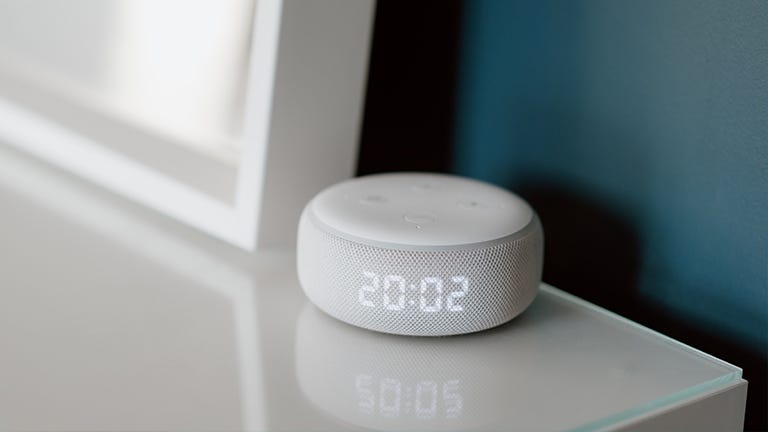Your cart is currently empty!
How Alexa Guard can Protect your Home & How to Enable it

Amazon Alexa and Echo devices can do a lot of things, from calling and smart home controlling, to music streaming and weather report. All of this with just a simple voice request.
Also, for everyone who doesn’t own a security system, Alexa can do it.
With the Alexa Guard feature, you can add more protection to your house, kind of like a surveillance system. The more Echo devices you have placed around your house, the better.
For everyone who cannot put his mind at ease while traveling or during a holiday away from your home, this feature can help you keep an eye on what is going on at your home. When a situation Alexa Guard considers an emergency happens, it can send you notifications and a record of what has activated it.

What is Alexa Guard Mode and its features?
Alexa Guard Mode is a free service, which can be used from every Amazon smart speaker and Alexa enabled devices.
Once activated it Alexa can listen for and notify you about the sound of:
- Smoke alarms,
- Carbon monoxide alarms,
- Glass breaking.
You can decide for what sounds Alexa Guard Mode notifies you during its setup.
Another great feature it offers is the ability to turn your lights on and off to deter unwanted visitors. Alexa can automatically turn your smart lights on and off to make it look like you are home, when in fact you are away. It works with all smart lights, switches, and plugs you have connected that are Alexa Certified.
Trending Bot Articles:
4. How intelligent and automated conversational systems are driving B2C revenue and growth.
It works on two modes:
- Away Mode, activated when you say “Alexa, I’m leaving”.
- Home Mode, activated when you say “Alexa, I’m home”.
How Alexa Guard detects the specified sounds in Away Mode?
When you have activated the Away Mode, Alexa can detect the sounds of smoke and carbon monoxide alarms and glass breaking the same way it detects the wake word for your voice commands (when you call it “Alexa”).
Once it listens to a sound similar to the ones we mentioned above, it sends a notification to your smartphone.
To improve its abilities, Alexa uses machine learning to determine the right action. It does the same for your lighting activity for your home based on their usage. This way it can better control how it turns on and off your smart lights when you’re away.
Alexa Guard Plus and its extra services
Other than the standard version of Alexa Guard Mode, Amazon has made available at the end of 2020 Alexa Guard Plus. It is an upgraded version of the standard one and includes a lot more features, which make it more helpful in guarding your home.
Apart from the capabilities mentioned before, Alexa Guard Plus includes:
- Activity sounds.
- It makes the sounds of a dog barking when detecting activity outside.
- Siren sound when activity is detected inside.
- Ability to call a dedicated Emergency Helpline from your Echo
Activity sounds include ones like footsteps, doors opening, and closing. When Alexa listens to these sounds and sends you a notification, you can playback what it has detected or Drop-In to a specific device and receive live audio of what is going on.
Of course for it to be able to detect movement and activity inside and outside your home, you will need to have movement sensors and outdoor-facing cameras. These devices will make better use of this service, instead of just using your Echo device’s ability to detect noises.
Alexa Guard Plus Costs and Emergency Helpline
Guard Plus, which adds more features that can help you at protecting your home, is a paid service. It comes at $4.99 a month or $49 a year.
It makes available the hands-free calls to Amazon’s Emergency Helpline and gets support from a representative, who can connect you with the police, an ambulance, or the fire department.
All you need to do is say to your Echo device: “Alexa, call for help”.
This is a great service since Amazon Alexa cannot call 911 or any other Emergency Service.
This means it can assist you not only when you are away, but also when you are at home.
Another extra feature Alexa Guard Plus includes, is the ability to use it with third-party Alexa enabled devices like Ring Alarm, ADT Pulse, ADT Command and Control, Abode, Scout Alarm, Resideo, A3 Smart Home, and Wyze.
How to enable Alexa Guard and customize the notifications
To enable the Alexa Guard and what notifications it sends you about emergencies while Alexa Guard Mode is active, you will need to go to the Alexa app on your smartphone.
From here you can enable the service, enable the Alexa Guard Plus, and customize everything that is related to it.
Here are the steps you need to follow:
- Open the Alexa app on your smartphone.
- Select the “More” menu ☰.
- Open “Settings” and scroll down.
- Find and tap the “Guard” option.
- Now follow the instructions and insert the data Alexa needs to enable the service.
When you enable the “Guard” option, when you go again here, you will find the Alexa Guard Status (Home or Away) and other information related to the service. - To modify the settings, tap the settings icon at the top right ⚙️.
Here you will find all the options you can use to customize the service and adapt them to your needs.
Once you have enabled and customized the Alexa Guard Mode, these are the voice commands you can use with it:
- “Alexa, I’m leaving.” when you leave the house to enable “Away Mode”.
- “Alexa, I’m home.” when you come back, so it doesn’t consider you an intruder.
- “Alexa, try Guard Plus”.
The last command will enable all the features Alexa Guard Plus includes, for free, for a 30-day trial.
Don’t forget to give us your 👏 !




How Alexa Guard can Protect your Home & How to Enable it was originally published in Chatbots Life on Medium, where people are continuing the conversation by highlighting and responding to this story.